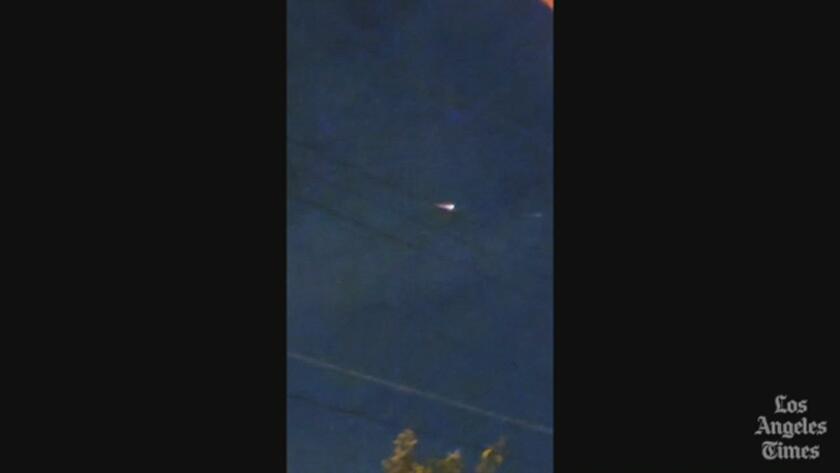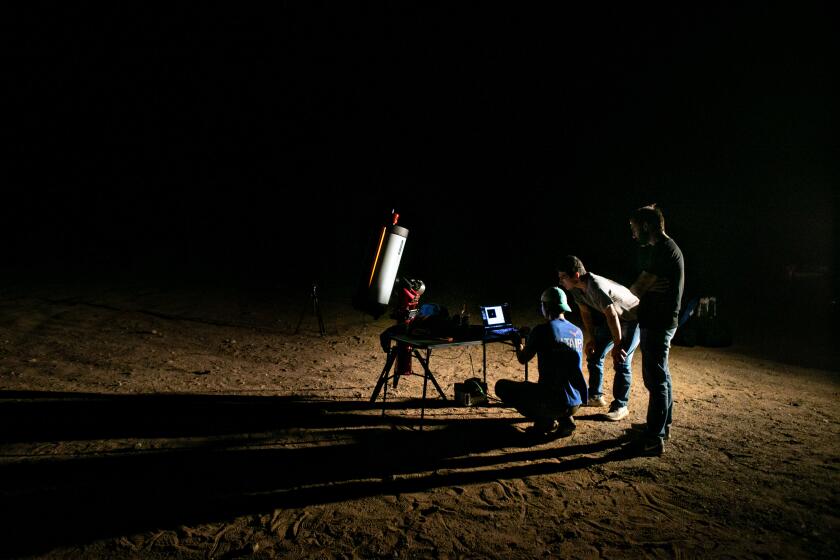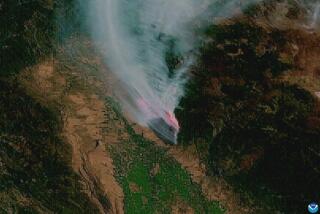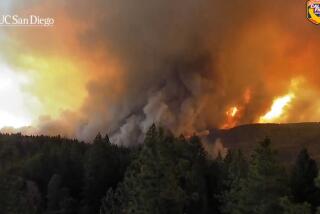Space station discarded some trash. It rained fire in California’s sky
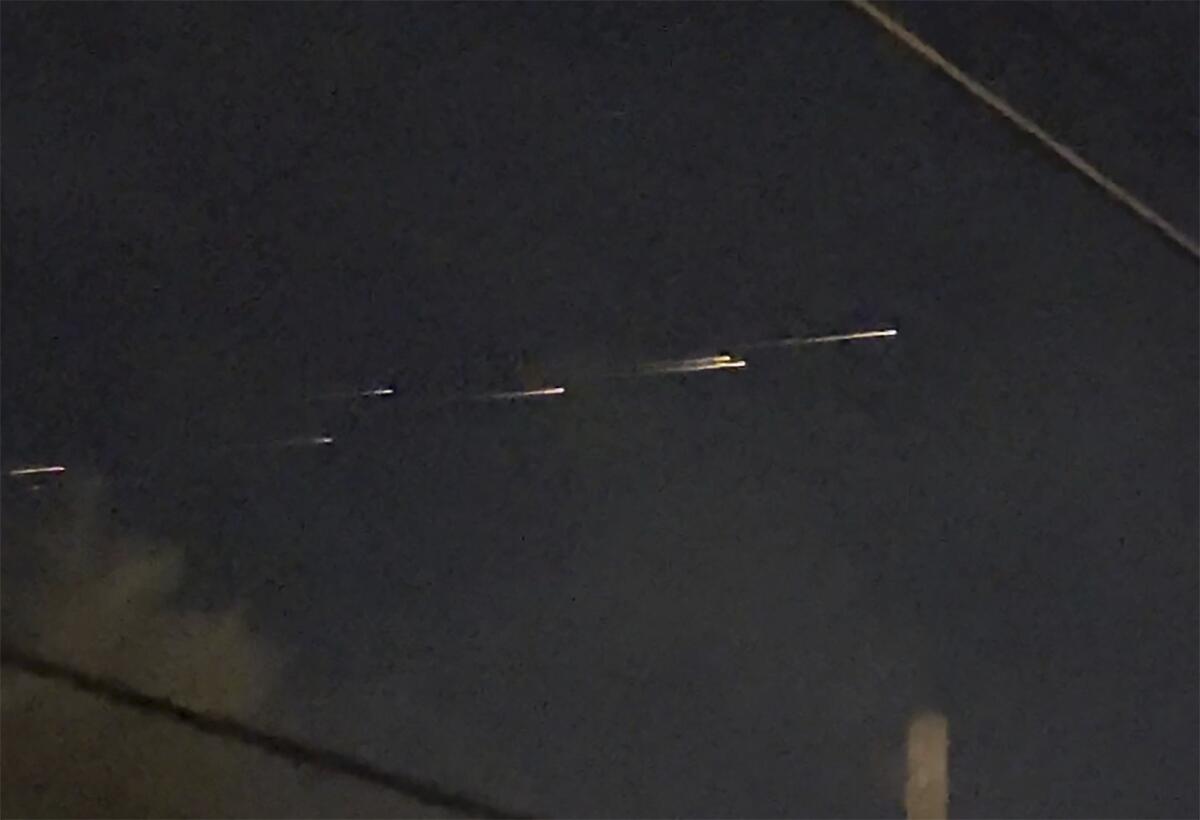
Jeff Watters and his friends weren’t sure what to think of the streaking lights that dashed across the Sacramento night sky late Friday.
About seven meteor-like blazes appeared to dart by around 9:30 p.m., diverting attention from ongoing St. Patrick’s Day revelry, as evidenced by video that Watters took.
“It looked crazy,” Watters said in a written statement to The Times. “We thought maybe it was some Starlink or SpaceX thing or something, but that didn’t really make sense.”
Turns out, the spectacle was created by flaming “orbital debris” reentering the Earth’s atmosphere above Northern California, after years spent orbiting the Earth since being discarded from the International Space Station in 2020, according to Smithsonian astronomer Jonathan McDowell.
“We knew this object was going to reenter sometime this weekend, but we didn’t know exactly when,” McDowell said — or where, for that matter.
Orbiting at a speed of 17,000 mph, such “space junk” is hard to precisely track, he said, which means that pretty regularly this type of debris — the aftermath of launches or left behind from space exploration — will return to the atmosphere in what’s known as an “uncontrolled reentry.” But, he said, the U.S. Space Force does track thousands of such items, so when the dazzling display was spotted Friday in skies from Sacramento to Fresno, he was able to match the event with the space debris.
“The light you’re seeing is the kinetic energy being dissipated,” McDowell said. “It gets so hot that it melts and breaks up.”
This specific piece of equipment was a 683-pound communications device launched by Japan in 2009 and attached to the outside of the International Space Station, McDowell said. It relayed information back to Earth for about eight years but became obsolete when its coordinating satellite retired. In 2020, ISS officials jettisoned the device from the space station, beginning its years-long journey back to Earth, he said.
McDowell figured that the pieces of melted equipment spotted in Northern California probably fell near Yosemite National Park.
Although the phenomenon brought wonder and awe across Northern California, McDowell pointed out there were at least two other pieces of space debris that also reentered the atmosphere in the last few days, though at locations that probably went unnoticed.
“I get a report like this from somewhere in the world every couple months,” he said. “They’re rare in any one place, but they’re common on a global scale.”
More than 200 pieces of space junk reenter the atmosphere every year, according to the U.S. National Oceanic and Atmospheric Administration, though many completely burn up and disintegrate upon reentry, and the majority fall into the ocean unseen.
“Every day the Space Force is tracking over 20,000 pieces in orbit around the Earth,” McDowell said, though he noted about 7,000 of those are working satellites. “This object is just one of those 20,000 that happened to reenter this weekend and happened to reenter at a time and place that it was seen by a lot of people.”
As the prevalence of such space junk increases, McDowell said, the chances that such debris could fall in a dangerous manner — hitting people or critical infrastructure — also increases, though those chances still remain low. He said he would like to see more safety precautions taken by teams launching such equipment, especially when the debris could include larger pieces.
China has been criticized for launches of a new rocket in which its booster has plunged uncontrolled back to Earth. The rocket booster has so far landed without incident, but experts worry that’s won’t always be the case.
“Every time they ... launch one of these, it is sort of orbital roulette,” McDowell said. “The chances are in their favor, but not so much that I don’t worry.”
There are ways to control and plan for how objects reenter the atmosphere, which many teams across the globe utilize.
A small satellite is speeding to its demise in a test that could help clean up space.
More to Read
Sign up for Essential California
The most important California stories and recommendations in your inbox every morning.
You may occasionally receive promotional content from the Los Angeles Times.
